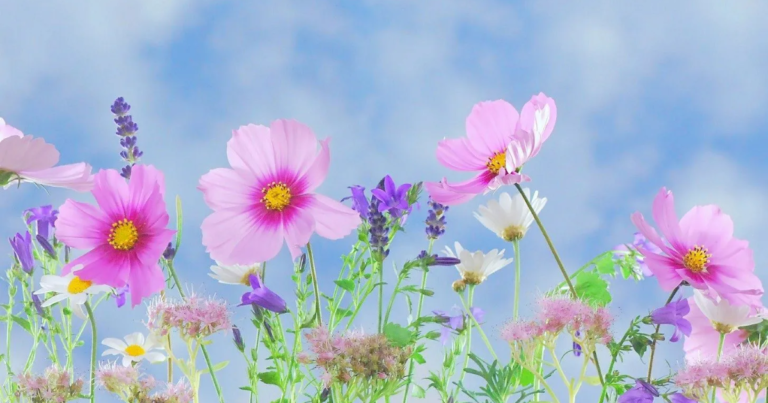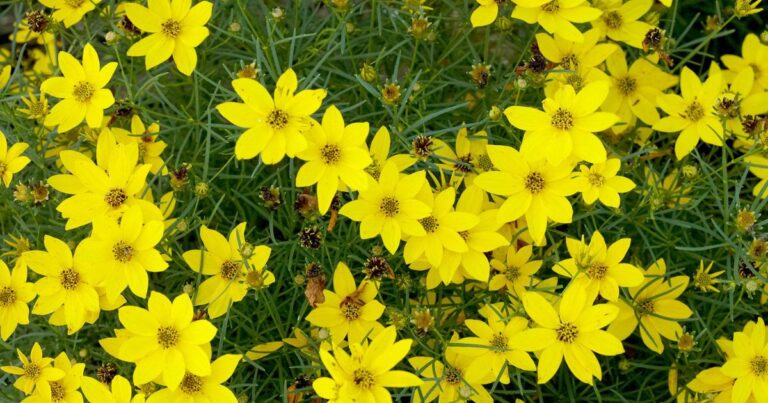Marigold Flowers Complete Guide, Types, Care, Planting, Uses & Grow
Marigold flowers, often considered the jewels of summer gardens, not only bring an explosion of colour but also a wealth of benefits that extend beyond their dazzling appearance. These resilient blooms have been cherished for centuries, gracing everything from backyard landscapes to ceremonial spaces worldwide.
Their easy maintenance makes them an ideal choice for novice gardeners, while seasoned horticulturists appreciate their versatility in companion planting. In this article I will cover the art of cultivating these radiant beauties from selecting the right variety to mastering the nuances of care and planting techniques.
What are Marigold Flowers?
Marigolds known scientifically as Tagetes, are not just vibrant additions to gardens, but they are also rich in cultural significance and environmental benefits. These annual plants typically showcase bright yellow, orange, or gold petals that symbolise warmth and positivity in various cultures around the world.
Their natural pest repelling properties make them excellent companion plants, they deter aphids, nematodes, and whiteflies while attracting beneficial insects like ladybugs. This harmonious relationship within the garden ecosystem highlights their value not only as ornamental flowers but also as essential players in promoting Biodiversity.

Types Of Marigold Flower
Marigold, known for their vibrant hues and cheerful disposition, come in several captivating types, each offering unique characteristics and benefits.
- French Marigold: (Tagetes patula) stands out with its compact growth habit and diverse colour palette ranging from orange to deep red. These marigolds not only add a burst of colour to gardens but are also valued for their ability to attract pollinators while repelling nematodes in the soil, making them invaluable companions for vegetable gardeners.
- African Marigolds: (Tagetes erecta), often known as Aztec or American marigolds, tower above their French counterparts with impressive heights that can reach up to three feet. Their large blooms make stunning focal points in landscaping and arrangements. These marigolds are celebrated for their medicinal properties, traditionally used in folk remedies for skin irritations due to their anti-inflammatory qualities.
- Signet Marigold: (Tagetes tenuifolia) is another delightful variety worth noting. With its delicate foliage and smaller blossoms bursting with bright lemon-yellow or orange hues, it boasts a mildly citrus fragrance that can elevate culinary dishes when petals are added as edible garnishes.
- Mayan Marigold: which presents a unique twist on traditional marigolds; featuring slender petals and an exotic appearance that mesmerises admirers while sharing its indigenous roots through cultural significance in many Latin American traditions. Each type offers distinct beauty as well as practical uses that enhance not just aesthetics but ecological balance within gardens.
What Color Are Marigold Flowers?
- Yellow Marigolds Flowers
- Pink Marigolds Flowers
- Red Marigolds Flowers
- Orange Marigolds Flowers
How to Plant Marigold flower?
When selecting your planting location, aim for an area that receives full sun, marigolds thrive in well drained soil enriched with organic matter. Prepare the ground by loosening the soil and mixing in compost to boost nutrients. Once you have chosen a sunny spot, you can start sowing seeds. Plant them about ½ inch deep and spacing them roughly 10-12 inches apart to give each flower room to bloom.

How To Grow?
Growing mari gold flowers is a rewarding endeavour that blossoms with vibrant colours and bountiful benefits. To kickstart your garden, consider sowing seeds directly into the ground after the last frost or starting them indoors for earlier blooms.
A tip often overlooked is that marigolds love warmth, and aim to plant them when soil temperatures reach at least 60°F (15°C) for optimal germination. Their unique scent acts as a natural deterrent to aphids and nematodes while attracting beneficial insects like ladybugs.
Take Caring Of Marigold Flower
Caring for mari gold flowers is more than just gardening, it’s about nurturing their beauty. These bright flowers grow best in well draining soil that has organic matter. They need at least six hours of direct sunlight each day to stay colourful and strong against pests and diseases.
Marigolds attract helpful insects and keep harmful ones away.Watering is also important for marigolds. They like consistent moisture but can get root rot if overwatered. Check the top inch of soil before watering, it’s dry, give them a good soak without drowning them.
Removing spent blooms, known as deadheading, encourages more flowers and extends the growing season. This simple task helps the plant produce new buds. By balancing sunlight, careful watering, and seasonal care like fertilising or adding compost, you can create a beautiful display that enhances your garden and supports local ecosystems.
Uses Of Marigold Flower
Their petals are a treasure trove of culinary potential; often used in salads and as a natural dye to enhance the visual appeal of dishes. Calendula, a type of marigold, is particularly revered for its peppery flavour and health benefits, making it a favourite among gourmet chefs and herbalists alike.
These flowers not only elevate the aesthetic quality of meals but also provide valuable nutrients and antioxidants. Their culinary uses, marigolds play a significant role in traditional medicine across various cultures.

The anti inflammatory properties of calendula make it an essential ingredient in herbal ointments and creams designed for soothing skin irritations. Their presence in gardens acts as a natural pest deterrent; gardeners cultivate them to repel aphids and nematodes while attracting beneficial pollinators like bees and butterflies.
Some Important Tips & Interesting facts About This Plant
- Marigolds are bright and attractive flowers that many gardeners and herbalists love. One interesting fact about marigolds, especially the Tagetes species, is that they can keep pests away from gardens.
- can grow 6 to 48 inches in height and 6-36 inches in width.
- The natural compounds in marigolds repel nematodes, aphids, and other unwanted insects, making them great partners for vegetables like tomatoes and peppers.
- Marigolds grow in various colours, such as red, yellow, maroon and even mixed colours.
- This pest repelling ability supports sustainable gardening by helping crops grow healthy without using harsh chemicals. Marigolds also hold cultural importance in many traditions.
- Marigold flower don’t flourish during the winter season as they are sensitive to cold and frost.
- In Mexico, their bright colours are part of the Día de los Muertos celebration.
- Marigolds contain lutein, which is considered beneficial for the eyes.
- Marigolds comprise antibacterial and antiviral substances that offer various health benefits.
- Marigold flower are effectively used for beauty, warmth, and creativity during death rituals.
- Marigold petals are used as herbal products.
- Marigolds are the cultural flower of Nepal.
Marigold Flower Is That Possible to Grow In Homes?
Growing marigold flower at home is not only possible but also rewarding. These vibrant blooms, known for their beautiful golden hues and pest-repelling properties, can easily thrive in various indoor conditions.

For those with limited outdoor space, container gardening offers a practical solution, simply select pots with proper drainage and use a high-quality potting mix to ensure your plants flourish. These hardy flowers prefer full sunlight (at least six hours a day), making window sills or bright balconies ideal locations to place them.
Conclusion
The Marigold Flowers are a vibrant and versatile addition to any garden, offering both aesthetic appeal and practical benefits such as pest deterrence. With a variety of species and cultivars available, gardeners can easily find the perfect match for their landscape needs.
Proper care, including adequate sunlight, watering, and soil management, ensures that these resilient blooms thrive throughout the growing season. By understanding their unique requirements and seasonal cycles, you can enjoy a flourishing display of colour from spring through fall.







